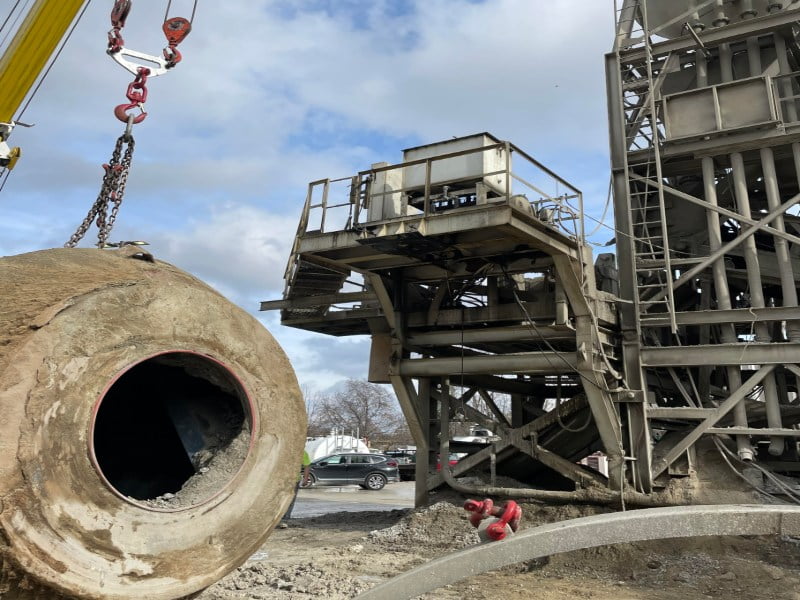
In the competitive world of rigging businesses, establishing a strong online presence is crucial. A well-designed website serves as a powerful tool to showcase your services, attract potential clients, and distinguish your company from competitors. If you’re seeking to create or improve a rigging company website, this comprehensive guide will walk you through the essential steps to build a successful online platform that resonates with your audience.
In today’s digital age, consumers heavily rely on the internet to research services before making decisions. Therefore, having a professional and user-friendly website is essential for rigging companies to thrive in the industry. Your website should not only provide information about your services but also convey credibility, reliability, and expertise.
Understanding Your Audience and Goals
Before diving into the technical aspects of website development, it’s crucial to understand your target audience and define your goals. Identify the specific needs of your potential clients, such as construction companies, manufacturers, or industrial firms requiring rigging services. Tailor your website content and design to address these needs effectively.
Consider your business goals – whether it’s increasing brand awareness, generating leads, showcasing past projects, or expanding your client base. Aligning your website’s purpose with these goals will guide your decisions throughout the development process.
Essential Elements of Rigging Company Websites
Professional Design and Branding
A visually appealing website with a professional design is the cornerstone of a strong online presence. Ensure your website reflects your brand identity through consistent colors, logos, and imagery. Use high-quality photos and videos of completed projects to showcase your expertise and credibility.
Clear and Compelling Content
Craft compelling and informative content that resonates with your audience. Clearly outline your services, certifications, safety protocols, and experience. Use engaging language to highlight the benefits of choosing your rigging company over others. Incorporate client testimonials and case studies to build trust and credibility.
User-Friendly Navigation
Simplify navigation to ensure visitors can easily find the information they seek. Organize content logically, use intuitive menus, and include a search function if necessary. Implement clear calls-to-action (CTAs) to prompt visitors to contact you, request a quote, or explore your services further.
Mobile Responsiveness
In an era where mobile browsing is prevalent, optimize your website for mobile devices. Responsive design ensures that your site looks and functions seamlessly across various screen sizes, providing a positive user experience regardless of the device used.
Search Engine Optimization (SEO)
Implement SEO strategies to improve your website’s visibility on search engines like Google. Conduct keyword research to identify relevant terms your audience might use when searching for rigging services. Optimize meta titles, descriptions, headers, and content to improve organic search rankings.
Integration of Contact Information and Forms
Make it easy for visitors to get in touch by prominently displaying your contact information on every page. Additionally, include contact forms strategically throughout the site to encourage inquiries.
Security Measures
Prioritize website security by implementing SSL certificates and ensuring compliance with data protection regulations. Display trust badges and certifications to reassure visitors that their information is safe.
Building Your Rigging Company Website
Step 1: Choose a Domain Name and Hosting Provider
Select a domain name that reflects your company’s name or services and is easy to remember. Choose a reliable hosting provider that offers sufficient bandwidth, storage, and security features for your website.
Step 2: Select a Website Platform or CMS
Choose a website platform or content management system (CMS) that suits your needs. Popular options like WordPress, Wix, or Squarespace offer user-friendly interfaces and a range of templates to simplify website creation.
Step 3: Design and Development
Utilize professional website templates or hire a web designer to create a custom design that aligns with your brand. Focus on creating a clean layout, intuitive navigation, and compelling visuals that highlight your services.
Step 4: Content Creation
Craft engaging and informative content that educates visitors about your rigging services, safety protocols, industry expertise, and success stories. Ensure the content is well-structured, error-free, and optimized for search engines.
Step 5: Optimization and Testing
Optimize your website for speed, SEO, and mobile responsiveness. Conduct thorough testing to ensure all features, links, and forms function correctly across different devices and browsers.
Step 6: Launch and Promotion
Once your website is ready, launch it officially. Promote your website through various channels, including social media, industry directories, and email marketing, to attract visitors and generate leads.
Conclusion
Building a successful rigging companies near me websites involves a strategic blend of design, content, functionality, and optimization. By understanding your audience, setting clear goals, and implementing the essential elements outlined in this guide, you can create a powerful online platform that effectively showcases your rigging services, attracts potential clients, and sets your company apart in the competitive market. Follow these steps diligently, and your website will serve as a valuable asset in growing your rigging business for years to come.
